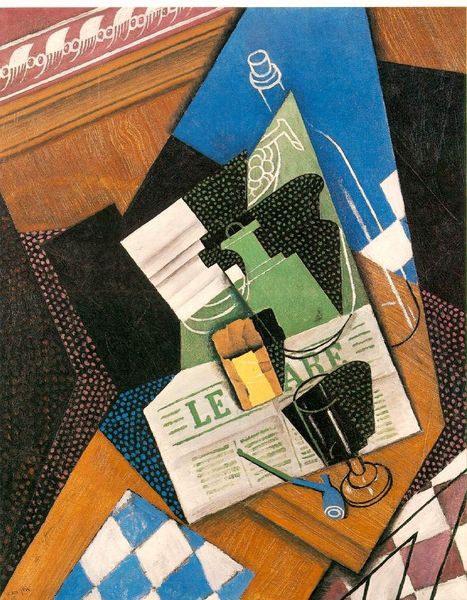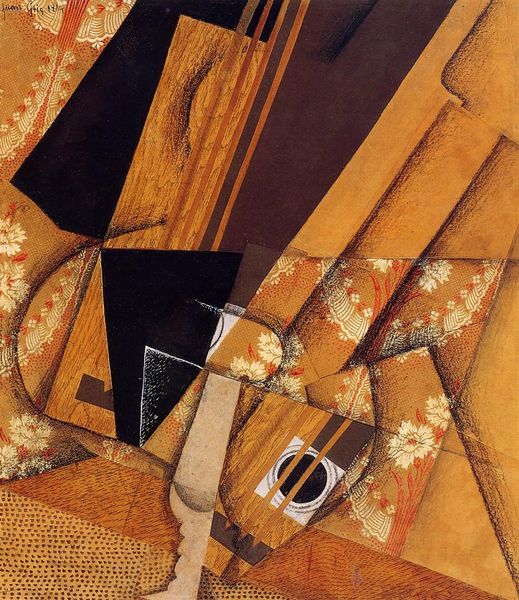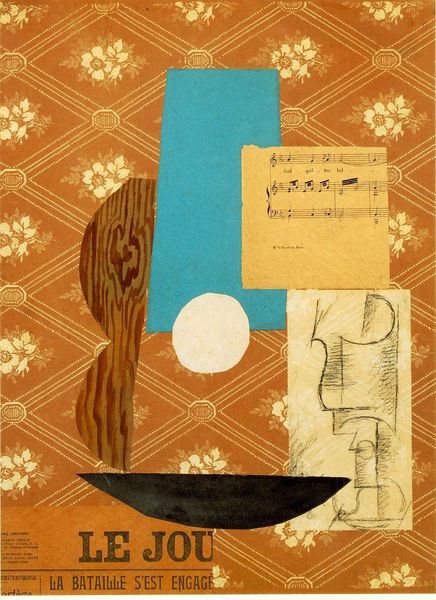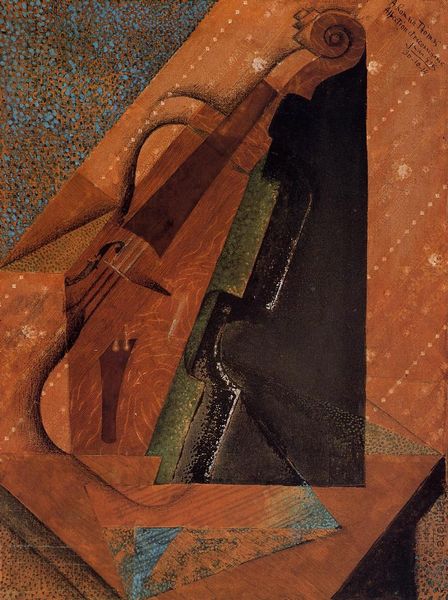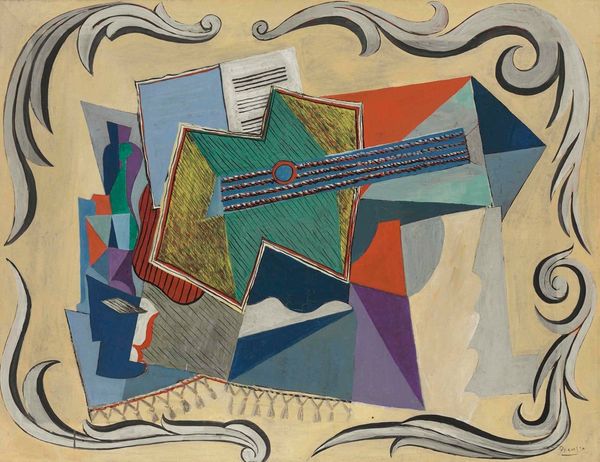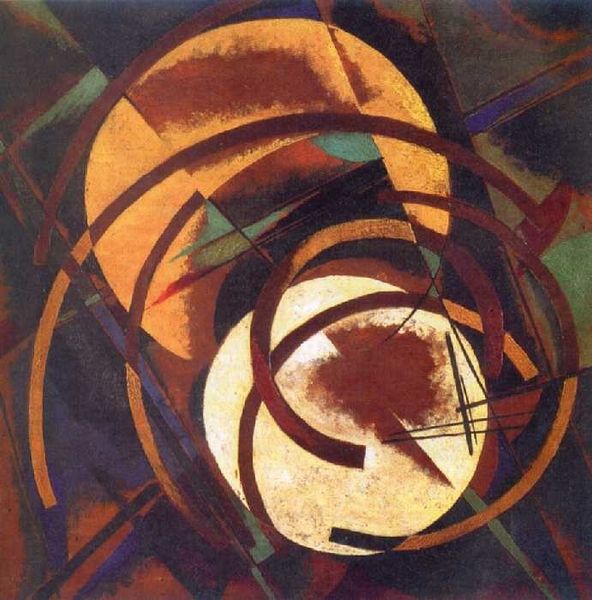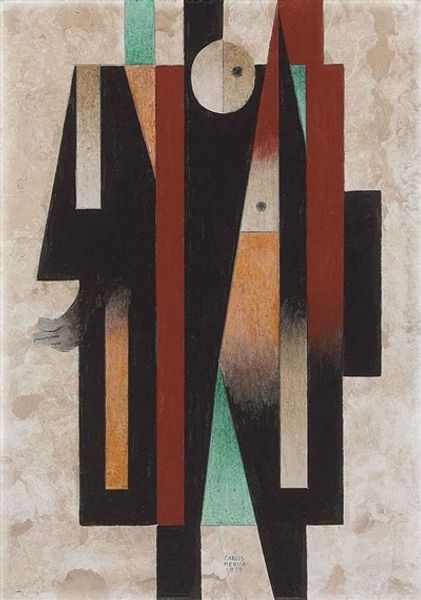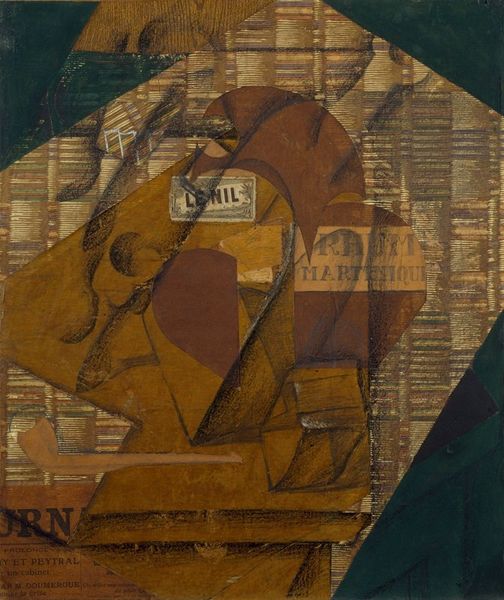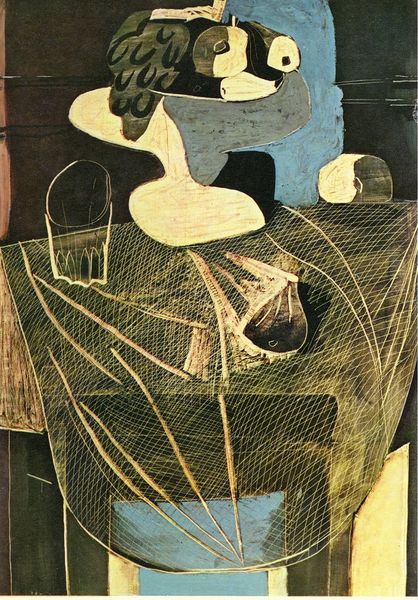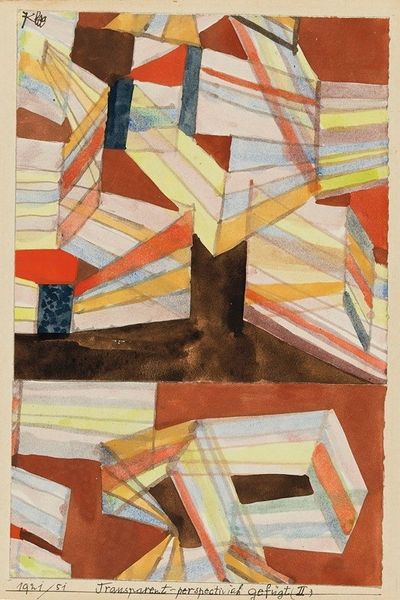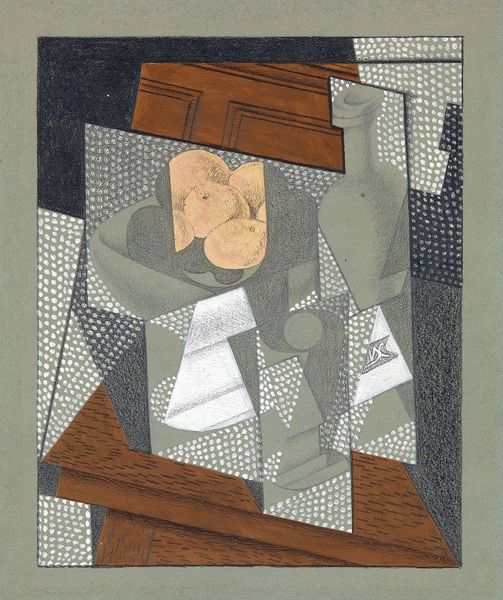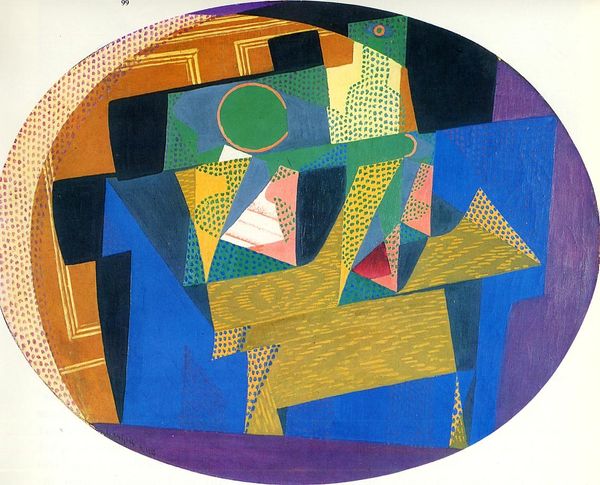
mixed-media, painting, oil-paint
#
cubism
#
mixed-media
#
painting
#
oil-paint
#
oil painting
#
geometric
#
mixed media
#
modernism
Copyright: Public domain
Curator: Looking at Juan Gris's "The Bottle of Banyuls," completed in 1914 with mixed media including oil paint, what strikes you initially? Editor: It’s fragmented but inviting. The palette is warm, almost autumnal, but those sharp angles disrupt any sense of tranquility. I find myself trying to piece it together. Curator: Gris, along with Picasso and Braque, radically changed painting through Cubism. In what ways do you feel this specific work by Gris advances the style and techniques of this period in art history? Editor: Its construction feels so deliberately unnatural, the deconstruction revealing how consumerism was impacting everyday lives through the representation of common items like wine and newspapers. Also, given the political tension building up at the time, how does the abstraction and denial of depth reflect something of the anxiety of that moment? Curator: Indeed, 1914 was a pivotal year. Gris often incorporated elements of contemporary life into his still lifes. You mentioned deconstruction—this collage-like approach challenged the traditional painterly surfaces. The inclusion of newspaper scraps and printed labels democratized the art object, taking it out of the realm of high culture and connecting it to everyday existence. How did this break down the rigid structures around who could create and enjoy art? Editor: It definitely shifted art towards greater accessibility, reflecting modern society, its fragmentation, and the rise of mass culture. It seems that by depicting items linked to sensory experience like a bottle of Banyuls wine, the artwork provokes viewers to interpret reality through our embodied social and political condition. Curator: His Synthetic Cubism was more playful and decorative compared to the earlier Analytical Cubism, though still intentionally puzzling. The composition feels almost like a stage set. A consciously crafted tableau, yes? Editor: Right, the "real" object transforms into shapes, and its reality becomes layered and interpreted depending on how the different shapes overlap or break apart from one another. Seeing it now, I feel like the artwork still provides space to interpret art as part of a continuing political, personal and artistic reality. Curator: It seems the subversion of tradition opens possibilities not only in art, but how art functions socially. Thank you for adding these perspectives. Editor: Thanks! It highlights the role that images play in broader social movements and moments in history.
Comments
No comments
Be the first to comment and join the conversation on the ultimate creative platform.
